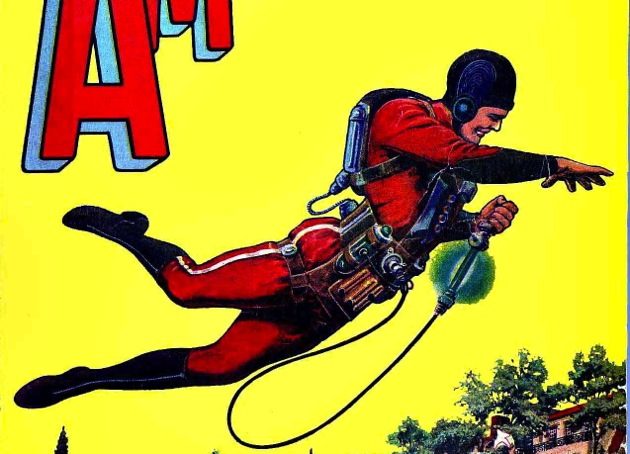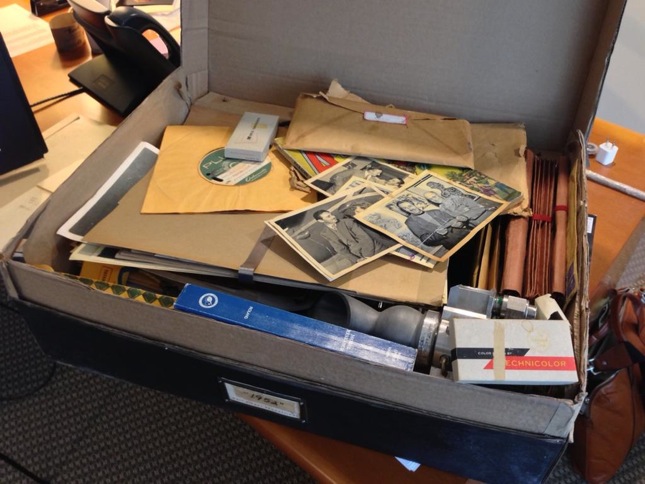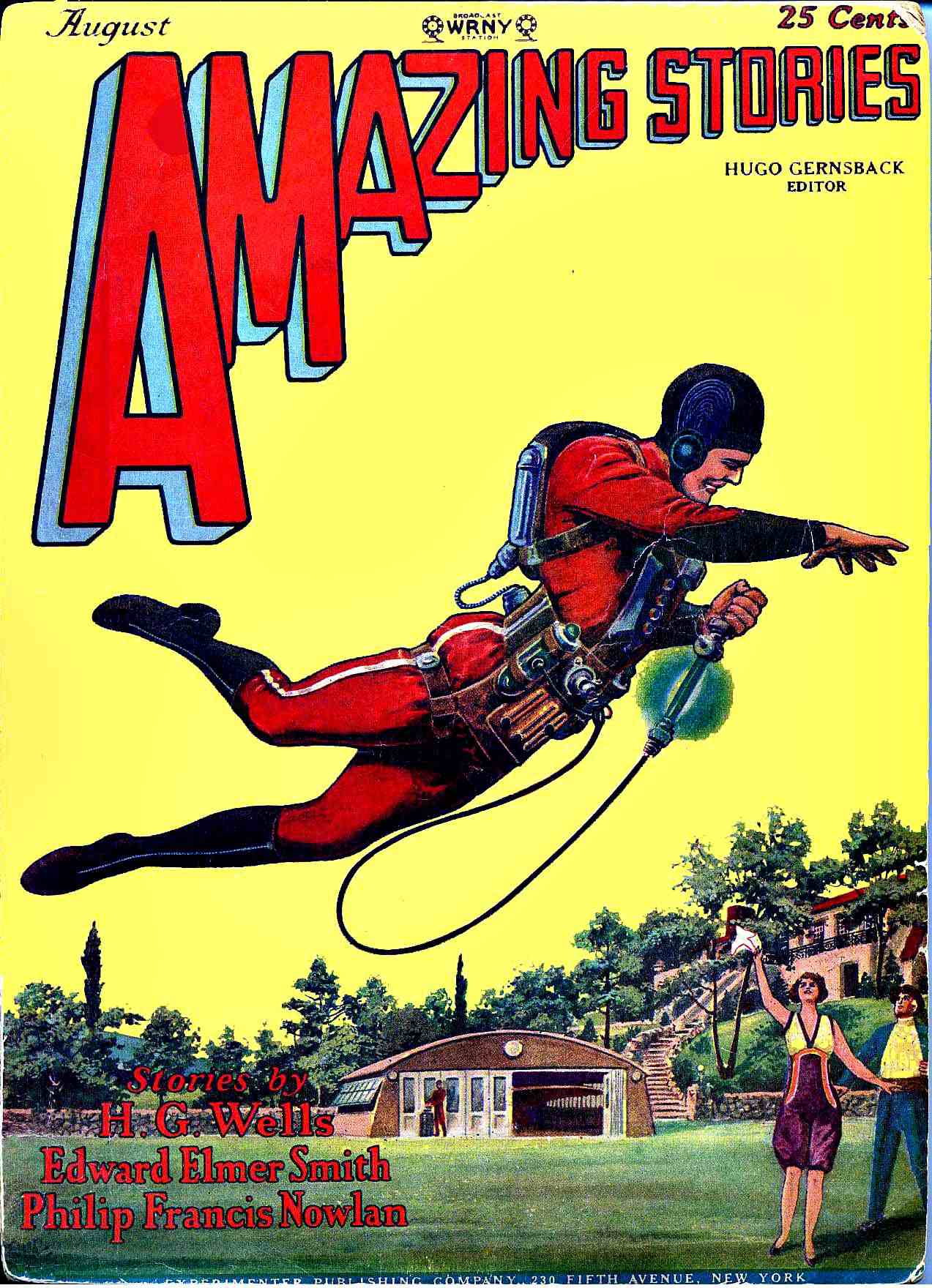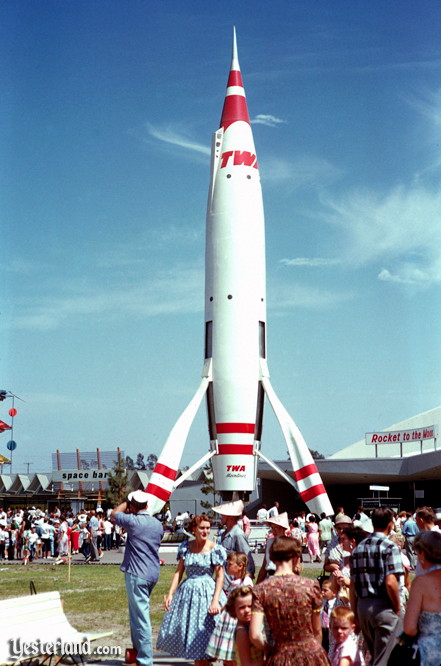Could 'Tomorrowland' Be About Early Space Travel?

Now that Disney has announced that the Brad Bird /Damon Lindelof project originally known as 1952 will officially be called Tomorrowland (and that George Clooney will star), I simply must share my fever-dream theory that this movie could be about early space travel.  Note that I wrote "could." Like everyone else out there, I'm speculating based on a handful of clues that Bird and Lindelof have released into the atmosphere: the movie's title, and the contents of the banker's box marked "1952" that Lindelof allegedly discovered at Disney. Last week, Bird tweeted a photo of what was in the box: some yellowed photos, envelopes, what appears to be a vinyl record, a box that reads "Technicolor" and, beneath it, a weird contraption that could be a camera or a rocket nozzle. An eagle-eyed blogger at Ain't It Cool News also spied the August 1928 cover of Amazing Stories comics peaking through the clutter.
Note that I wrote "could." Like everyone else out there, I'm speculating based on a handful of clues that Bird and Lindelof have released into the atmosphere: the movie's title, and the contents of the banker's box marked "1952" that Lindelof allegedly discovered at Disney. Last week, Bird tweeted a photo of what was in the box: some yellowed photos, envelopes, what appears to be a vinyl record, a box that reads "Technicolor" and, beneath it, a weird contraption that could be a camera or a rocket nozzle. An eagle-eyed blogger at Ain't It Cool News also spied the August 1928 cover of Amazing Stories comics peaking through the clutter.
 The website notes that that particular issue contains the first-ever Buck Rogers story to appear in any media. (The character's name was Anthony Rogers initially. He'd become the more manly Buck the following year.)
The website notes that that particular issue contains the first-ever Buck Rogers story to appear in any media. (The character's name was Anthony Rogers initially. He'd become the more manly Buck the following year.)
The Buck Rogers storyline is interesting, and, actually, it's not antithetical to my theory, but if the comic does play a role in the plot of Tomorrowland, there's another story contained within that fits more appropriately with the movie's official title.
The cover of that issue of Amazing Stories illustrates the beginning serialization of "The Skylark of Space," a story by Edward E. "Doc" Smith that, in the 1940s, became a novel of the same name, and is considered an early and influential story about space travel that's right up there with the work of Jules Verne and H.G. Wells.
The "Skylark of Space" is about a scientist who discovers how to harness a newly discovered element "X" for space travel at the speed of light.
Now consider this: When Tomorrowland opened as a future-themed section of Disneyland in 1955, the centerpiece exhibit was the 76-foot tall TWA Moonliner rocketship (below right) that was built with the help of the "Father of Rocket Science" Werner Von Braun, who designed the German V-2 rockets that were used in World War II and, after the war, went to work for NASA, where he engineered the Saturn V rocket that took the Apollo astronauts to the moon.
 The TWA Moonliner was an early, romantic iteration of America's space dreams: a collaboration of Disney Imagineering and Von Braun's scientific genius that envisioned what a commercial spacecraft to the moon would look like. (It was a far cry from the spider-like Lunar Module that eventually took Neil Armstrong and Buzz Aldrin to the moon's surface in 1969.)
The TWA Moonliner was an early, romantic iteration of America's space dreams: a collaboration of Disney Imagineering and Von Braun's scientific genius that envisioned what a commercial spacecraft to the moon would look like. (It was a far cry from the spider-like Lunar Module that eventually took Neil Armstrong and Buzz Aldrin to the moon's surface in 1969.)
Speculation around the casting of Clooney is that he'll play Walt Disney, which is certainly plausible, but if you look at pictures of Von Braun, The Descendants star could easily play Werner as vell. (Speaking of rocket scientists, I can't get a clear enough bead on the top-most photo in that banker's box, but the bald guy standing next to Walt Disney looks like Robert H. Goddard, who is credited with building the first liquid-fueled rocket. Then again, if the photo was taken in 1952, it can't be Goddard. He died in 1945.)
So, what would the plot be, you ask? Well, if Tomorrowland and the Amazing Stories issue are both valid clues, then, I'm thinking, the movie is a mix of history and science fiction where the TWA Moonliner goes on an actual trip into space in 1952 before being parked at the theme park. Can't you see the shot of the ship having just returned to Earth — after some white-knuckle re-entry scenes — morphing into a shot of the rocket surrounded by tourists at Disneyland? I can also see Howard Hughes, who owned TWA at the time, and other real-life figures playing roles in the movie.
Okay, you heard my theory. Now tell me yours before the movie opens on Dec. 14, 2014, but hurry. I'll be going to moon — bang-zoom!— a lot sooner than that.
[Ain't It Cool News, Brad Bird]
Follow Frank DiGiacomo on Twitter.
Follow Movieline on Twitter.
